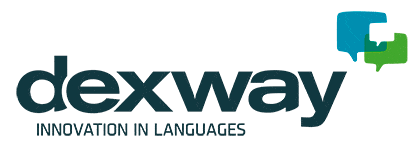One of the greatest innovations of recent years in education has been the implementation of Flipped Classroom. With this didactic strategy, a blended alternative to the traditional structure of a class is offered, decentralizing the axis of the teacher’s class to encourage greater student interactivity with new and more diverse multimedia content.
Among all the various areas of education, languages are the sector that has taken off the most and therefore, one of the greatest precursors of didactic innovation. And the flipped classroom is an option that makes it easier to deepen the knowledge of the study of a foreign language.

What are the advantages of Flipped Classroom in language classrooms?
#1 Time optimization within the classroom
The multimedia tools, available before the beginning of the class, facilitate the functions of the teacher with his students, optimizing the classes since the students have already reviewed the lessons and attend the class with at least the basic concepts understood. Hence, the concept of “flipping the class“, because students have already been able to train before entering the classroom and can devote themselves to deepening knowledge.
And not only on the part of the students, but the teacher, through the doubts published by students, can know the weaknesses and strengths of each student. Thus helping them in particular, facilitating the teaching of groups for reinforcement among classmates.
#2 Availability of multimedia materials
In a world in which the digital environment is increasingly important, students have a great deal of content at hand that the teacher has already been able to preselect as interest to the class. Particularly for languages are examples of word usage, audio clips for pronunciation and videos that put certain expressions into situation.
With multimedia tools, students will have even easier to capture the nuances that are required to learn in a foreign language. Putting yourself in a situation when facing the reality of each language will be essential for the implementation of knowledge. With these new more dynamic materials the student will have a greater facility in learning complicated details of each language such as Phrasal Verbs, new alphabets, comparisons of declines, False Friends or iconographic writings.
#3 Independence for students
Students can use multimedia tools at all times, and therefore they can devote more time to content in which each student has greater weaknesses. Then you can reinforce the subjects with your instructor, perform group dynamics with your classmates and focus on conversational challenges, which are all necessary when learning another language.
“Flipping the classroom is more about a mindset: redirecting attention away from the teacher and putting attention on the learner and the learning.”
Aaron Sams, (2012) Flip Your Classroom ASCD, Pg. 11
With the appointment of this American professor It is demonstrated that through flipped learning, the classes stop focusing on the teacher, to focus more on the needs of the students, which at the same time generates greater dynamism for the students.
Besides, with the doubts that the students have accumulated after the review of the contents, the teacher can make a personalization of the progress of the course, as well as give a closer and more direct treatment with the student’s objectives.
#4 Improves student-teacher interaction
Likewise, the Flipped Classroom promotes two-way communication between the teacher and the student, breaking the barriers between “trainee” and “trainer”, generating a much more pleasant and efficient climate in the classroom.
In this way the classes are more dynamic and attractive for the students, who lose the traditional observer status to become more active participants in the classroom, further improving the classroom environment, facilitating not only the personalization of the contents but also the closeness with the teacher.
#5 Improves interaction between students
By having content that the students can review prior to the class, the resolution of doubts by them is encouraged by having a communication platform inside and outside the classroom facilitates sharing content, making joint consultations and proposing to the teacher the method that should be taken during class.
The resolution of the doubts in a self-taught way generates a better reminder of the contents, in addition to a greater dynamism to the class. Greater fun for students and a much faster perception of knowledge acquisition. Also, when students resolve their doubts among themselves, even outside the classroom, a team spirit is encouraged that makes all students more proactive.
#6 Development of forgotten skills “Speaking”
Communication is, without a doubt, a key axis in language learning. One of the biggest problems for students of language courses is that, when faced with reality, they have not really trained in real communication situations.
With flipped classroom, grammar or vocabulary content can be learned by students before class, leaving their doubts to the teacher, and thus optimizing the time in the classroom that can be invested in Speaking.
Thus students prepare for real situations, the dynamism of the class increases and the contents learned can be implemented in the class to improve their recalling of skills.
You may also like:
- How to form effective groups at language schools
- 6 Advantages of The Flipped Classroom for the Learner
- Dexway Stands Out for its Flipped Classroom Educational Model for Teaching Languages

